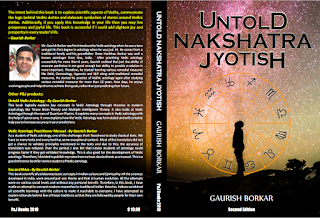Get best out of three and half Muhurtas in Indian calendar Part 1
As I mentioned
multiple times before, ancient Indians successfully merged all the best
practices in day to day life to make the life better. One of the highly
considered things in Indian calendar is Muhurta or selection of good time. The
concept behind Muhurta is selecting good time for doing anything important or
special. This, in fact, is in sync with the basic
concept of Astrology. Even though I believe in the concept of Muhurta and
have seen some mesmerizing results, I feel that people have been giving too much
of importance to Muhurtas than actually needed.
There are
certain challenges in selecting a Muhurta and let’s look at them a bit. The
biggest challenge is that the rules on which Muhurtas are decided differ from
text to text. As far as my study of Muhurta goes; I have seen that every ancient
text on electional astrology (Muhurta) has a variation of a particular rule!!!
Secondly, no one has explained the rationale behind the rule that they stated
and due to this fact almost every Panchnaga or Indian almanac mentions different
Muhurtas. L Thirdly
in today’s fast paced world it’s difficult to wait because of unavailability of
Muhurta. Muhurta texts also mention to take planetary positions into account
and usually this fact is conveniently ignored most of the times. My guidance
here would be to consider Muhurtas for very important occasions.
The four
important Muhurtas are Gudi padwa or Ugadi, Akshyya Trutiya, Vijaya Dashami and
Diwali. If you observe the timing of these 4 Muhurtas then you will realize
that first 2 are celebrated in the morning and later two are celebrated in the
evening.
In the morning
the Sun occupies first house indicating these 2 occasions are for your personal
wellbeing and growth. In the evening sun is in the seventh house indicating
external world, to be precise a partner or enemy.
Vijaya dashami
is considered to be a good Muhurta for seemollaghanam or for attacking an enemy.
On Vijaya dashami the Sun occupies sixth sign Virgo and Moon occupies tenth
sign Capricorn. Sixth sign or house is indicator of enemies and tenth sign or
house is indicator of action or karma. So this combination indicates action
against enemies. This is also true for Diwali. Diwali is considered to be a
beginning of new business year in Indian tradition. On Diwali sun and moon occupies
seventh sign or Libra. Seventh sign or house is indicator of business. Similarly
Gudi padwa (New Year) comes when sun and moon are in Pisces. Pisces is the twelfth
or last sign that indicates the end or new beginning. The meaning of word
Akshyya is without loss or break. On Akshyya Trutiya sun and moon both are
exalted and exalted planets give easy success. This is the significance of
Akshyya Trutiya! Traditionally, you will find farmers starting their work for
new crop on this day.
In Indian astrology
nakshtra or constellation is very important and effects of buying or starting anything
new on a particular nakshtra have been clearly mentioned. This may sound illogical
and in my experience of last 21 years these results have proven to be surprisingly
accurate. Let’s take a quick look at the effects of nakshtras during these 4 Muhurtas.






Comments
Post a Comment